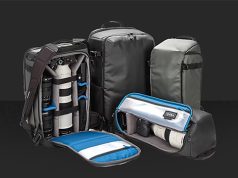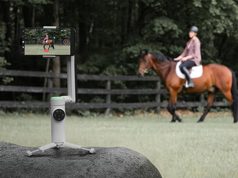As the economy slowly recovers, dealers should be aware of hidden opportunities. The accessories market, which historically was unheralded and underestimated before showing its power as a margin maker in recent years, is a major revenue contributor to the consumer electronics industry.
While the average wholesale unit prices for accessories ($25) are slight compared to products such as TV sets ($587) and PCs ($481), margins on accessories are higher and their relative affordability helps bolster the bottom line for many retailers.
Accessories are a unique entity in the sense that their viability extends to prosperous and challenging times, economically speaking. Accessory sales expand with the increased sales of the main imaging and CE products they complement. Conversely, during more difficult times, as we have witnessed recently, consumers postponing product purchases—even big ticket items—tend to focus on more cost-efficient alternatives, a scenario in which accessories present an ideal solution. CEA's new study, “Accessories Purchasing in the 21st Century,” provides an opportunity for better understanding consumer behavior and motivations as they relate to the sales of accessories. Key findings in the study include:
• Six in 10 (61 percent) online U.S. consumers shopped for accessories in the past year and half (53 percent) of those bought something.
• Accessory shoppers plan to increase spending on accessories next year by 5 percent.
• Enhancing the performance of CE devices is the primary impetus for most accessory purchases.
• The majority of accessory purchases are made at brick-and-mortar retailers vs. online retailers.
According to CEA's U.S. Consumer Electronics Sales and Forecasts (January 2010), the CE industry is projected to generate $165.3 billion in shipment sales in 2010. Of that amount, the accessories and batteries market will bring in just over $14 billion, or 9 percent of the industry total. As consumers evaluate new CE purchases, accessories growth is forecasted on cleaning products, cases and surge protectors. This underscores the reality that despite a hopeful transition into better economic times, consumers remain focused on accessories that protect and personalize.
Most consumers (64 percent) tend to buy an accessory once they have identified the need for one, while other shoppers (23 percent) are inclined to buy on impulse. Whether the purchase of accessories is motivated by need or desire, more often than not consumers buy accessories in order to enhance the performance of their imaging/CE devices.
As is often the case with any potential purchase, word-of-mouth can function as either an incentive or a deterrent. Since advice from friends and online customer reviews are identified as two of the most frequent sources of information, it is vital for dealers to be aware of consumer sentiment and public feedback.
After consumers have gathered sufficient information, they will evaluate the products in order to identify the best options. The principal considerations informing an accessory purchase are functionality and quality. Price is another influence, which reinforces the understandable proposition that shoppers are looking for value combined with reliability.
Therefore, marketing messages should convey the quality, functionality and value of the products to create a more compelling purchase opportunity. Once a consumer buys an accessory, satisfaction hinges on the accessory meeting their expectations in terms of functionality, quality and other features they were seeking.
While CE accessory shipments are unlikely to match the peak sales of 2008, dealers should aggressively merchandise these margin-makers to attract shoppers and build new sales opportunities. The market will continue to be positively impacted by the emergence of new technologies and any sustained economic upturn will bolster accessory attachments during the initial purchase.
Need proof? In 2010, CEA research found that consumers plan to buy $409 worth of accessories on average, topping 2009 spending levels by five percent. Consumers consistently indicate that they will embrace products designed to enhance their CE experience, an opportunity the accessories market is ready to address.
More than ever, manufacturers and retailers are best advised to actively promote awareness of their products, monitor consumer reaction and, as always, deliver competitively priced and high-quality accessories.
Sean Murphy is Senior Account Manager, Market Research, CEA.





